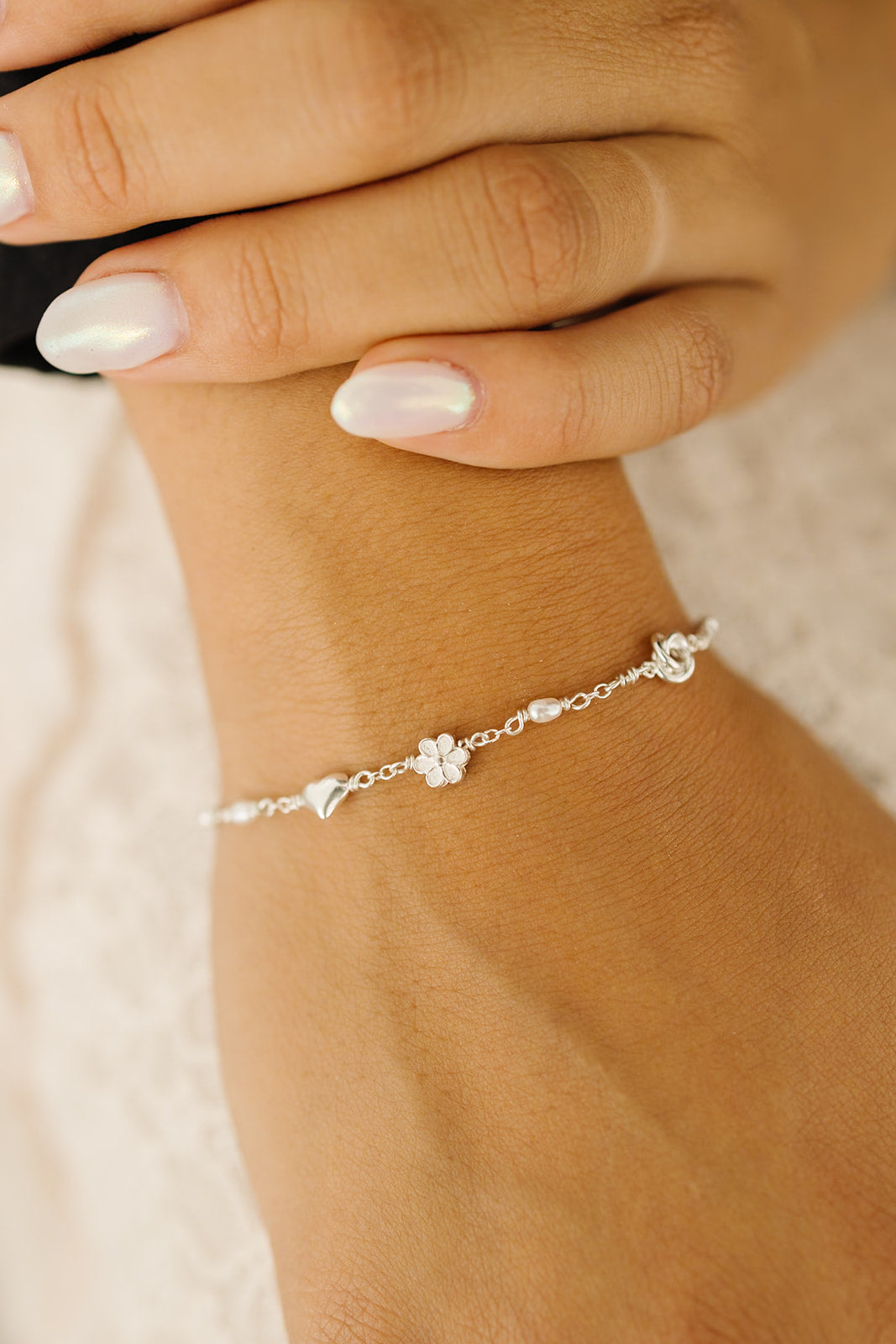Partager
Gold-Filled Jewelry: The Gold To Fulfill All Your Jewelry Needs
Gold-filled does not mean your jewelry is "filled" with gold. Confused? Keep reading to learn about this top choice in gold jewelry.
. . . . . . . . . . . . . . . . . . . . . . . . . . .
The Topics
 |
1. Why is it important to know what gold-filled is? 2. What is gold-filled jewelry? 3. Gold-filled vs. gold-plated 4. What does 14k gold-filled mean? 5. Does gold-filled jewelry tarnish? 6. How do I best care for my gold-filled jewelry? 7. How do I know my jewelry is really gold filled? 8. Is gold filled hypoallergenic? 9. Final Thoughts |
Why is it important to know what gold-filled is?
When shopping for gold jewelry, it is important to make an informed purchase. There's gold-plated, gold-filled, vermeil, and solid gold to distinguish from. In this article, we'll go over gold-filled and gold-plated specifically.
Additionally, knowing what kind of jewelry you are wearing and how it might affect your skin is important. Let's get started on understanding gold-filled jewelry…
What is gold-filled jewelry?
To first clear up some possible confusion, gold-filled jewelry is not "filled" with gold. Instead, gold-filled jewelry contains a sturdy base layer of metal with a mechanically bonded layer of gold alloy to the surface.
For comparison, gold-plated jewelry contains a base metal with a very thin plating of gold.
Gold-filled vs. gold-plated jewelry
If gold-plated and gold-filled contain a base metal with a gold surface, how are they different?
The production process of both gold-filled and gold-plated jewelry creates two significantly different products. Gold plate uses a very thin surface layer of gold on a base metal. Gold-filled is a mechanically bonded layer of gold that contains 100% more gold than gold plating.
Here's an example of the difference between gold-plated and gold-filled wire.

While the thin layer of gold plate can easily flake off, gold-filled will never flake due to its mechanically bonded and thick gold layer.
What does 14k gold-filled mean?
Karat and alloy are two essential terms for understanding gold purity. A karat is the measure of gold purity. An alloy is a mixture of metals. Pure gold without the addition of other metals is too soft and malleable to create jewelry with. Gold alloys are created by combining gold with other metals to make durable and lasting jewelry.
Some examples you may see jewelry shopping are 9k, 12k, 14k, 18k, and 24k. Each number indicates the percentage of pure gold in the alloy. For example, 14k gold contains 58.3% pure gold and 41.7% other metals. A higher number indicates a higher concentration of gold. 24k is the highest purity at 99.9% gold.
24k = 99.9% gold
18k = 75% gold
14k = 85.3% gold
12k = 50% gold
9k = 37.5% gold
You'll find most of our gold jewelry in 14k gold filled, an excellent balance between durability and higher gold purity.
Does gold-filled tarnish?
14k gold-filled jewelry is extremely tarnish resistant due to its higher percentage of gold. Yes, tarnish is still possible, but it depends on how it's cared for and environmental factors.
Here are a few factors that contribute to tarnish:
- Household chemicals
- Certain skin pH
- Heat, sun, and humidity
- Water exposure
- Certain cosmetics and perfumes
- Air pollution
Good news! Sterling silver tarnish is reversible and easily preventable.
How do I best care for my gold-filled jewelry?
Proper storage is key to keeping your jewelry safe and protected. Here are a few notes:
- A sturdy, preferably hard-case jewelry box prevents anything from crushing delicate pieces.
- Keep jewelry separated to prevent scratching.
- Ensure your jewelry is dry and clean before inserting it into storage.
- Keep chains organized to prevent tangles.
- Don't store tarnished jewelry with clean jewelry.
Limiting exposure to certain elements throughout the day will prevent physical damage and significantly reduce the possibility of tarnish. Make sure to limit exposure to these:
- Household cleaning chemicals
- Tap water, pool water, salt water
- Sun and heart
- Certain cosmetics, perfumes, and deodorants
Day-to-day activities may add unexpected exposure and damage to your jewelry. Try to avoid these tasks when wearing jewelry:
- Swimming or showering
- Cleaning, cooking, and gardening
- Sports and exercise

How do I know my jewelry is really gold-filled?
Do you ever see those tiny numbers discreetly placed on your jewelry pieces? Those numbers, quality stamps, tell you exactly what your jewelry is made from.
You'll often spot gold-filled abbreviated as "GF," and usually the karat, 14k for example.
You may even see 14/20, meaning 14k gold-filled as well.
Is sterling silver hypoallergenic?
Gold-filled jewelry is hypoallergenic and an excellent choice for those with sensitive skin. Allergies can occur with gold-filled jewelry, but it's very rare.
An example is a sensitivity to specific gold alloys. Some wearers may have a reaction to 14k gold jewelry but not 18k due to its higher percentage of gold.
Final Thoughts
If you wear gold jewelry, gold-filled jewelry is the best option when considering affordability, durability, quality, and longevity. Gold-filled jewelry is extremely difficult to tell apart from solid gold for only a fraction of the price. It will last a lifetime if cared for properly and contains 100% more gold than gold-plated pieces. Lastly, gold-filled jewelry is an excellent gift option for its hypoallergenic nature and quality.




